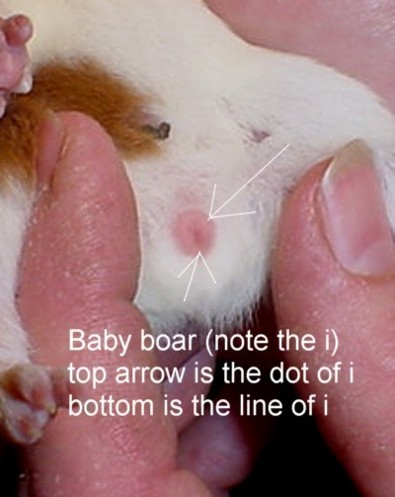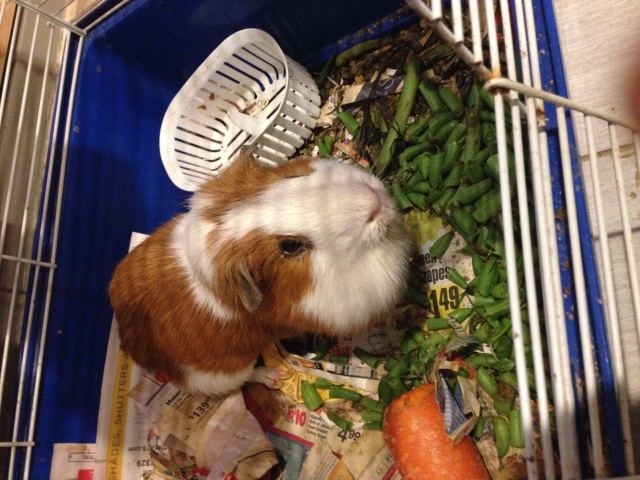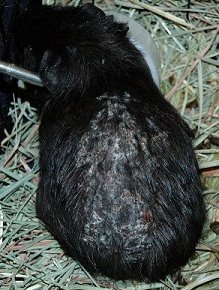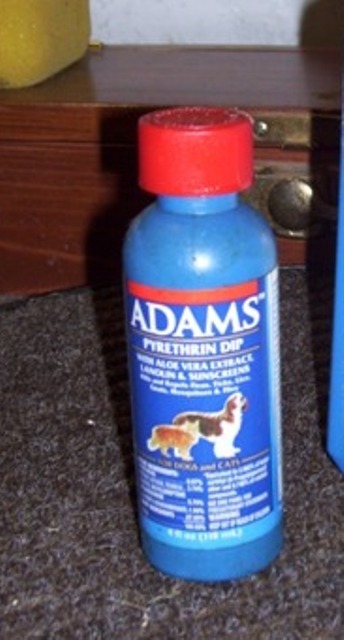QuestionI got 2 pigs 7 months ago. One seemed to be a little different from the beginning. She moved slower, sometimes holds her head funny. When she got excited she'd pop and then fall over. Lately, it is getting worse. She is even slower, falls over when walking, bobs her head from side to side when I bring in treats. Just took her to vet, he says she it healthy but blind. All internet searching leads to inner ear infection but Vet said ears looked good. Good the Vet missed the inner ear infection?
Any help appreciated
AnswerThe head tilt is an indicator of an inner ear infection. Unlike a standard middle ear infection it's not able to be seen like we do when looking at a reddened or dull eardrum. But what you're describing is a classic sign. The head bobbing is an attempt to maintain balance. In animals it can heal but create scar tissue that is invisible to examination. But the symptoms remain.
If she is blind it could be something that she had before you got her but didn't really manifest itself. Animals find a remarkable way to deal with what we would define as handicaps, but they simply look at it as a challenge and learn to deal with it. Many times when they live with another animal that friend will act as eyes and ears to their buddy and make the blind animal appear to be normal when it is not.
You don't really say what she looks like, but I'm wondering if she is an all white pig and might be something that is (mistakenly) called a "lethal white." That's a term used in horses and is the result of genetic incompatibility when breeding certain Palominos to another Palomino horse. Those lethal white babies do not survive more than a few days and have multiple deformities internally.
Lethal white cavies have very distinctive features, one of which are very small eyes. They too are the result of genetic incompatibility from breedings between roan colored pigs to another roan, also dalmation to dalmation. This doesn't always happen and the true die hard roan and dal breeders still run the risk of a lethal in a litter because they claim the very best roans or dals come from those breedings. Those 'lethal white' babies can and do often survive and live a fairly normal life. Some have deformed dental issues making it difficult for them to eat, but some do not.
That of course is just trivial information and may not be applicable in this case. But I suspect this little gal had an issue prior to your acquiring her. At this point there isn't any treatment, and if she eats and drinks okay there's no reason she can't live out a healthy life. As I said, animals have a way of dealing with issues that humans simply pity themselves for.
To understand how these inner ear infections cause the tilt it's easiest described by thinking of a half full glass or bottle of water. If you tip it to one side the liquid will always find level. That's how carpenters find the level line when building something. The little tube of water in the carpenters level does the same thing.
The inner part of our ears contain fluid that also does the same thing. When there's damage to that little "bottle" inside the ear the fluid doesn't find level, so the balance is affected. It makes the victim dizzy when they tip or move, thus causing them to fall over.
Because our planet is always spinning around we have to have that leveling mechanism to keep us from falling over. That and gravity keeps us able to stand up straight and not fall off the earth.
Humans get a disease called Meniere's disease (pronounce Men-Ears)which is basically the same thing. The patient cannot maintain stability without medication. They become dizzy and fall over just like your pig does. It's worsened when lying down. The room feels like it's spinning when they lie down. That's one of the defining differences between an inner ear and a middle ear infection. We can't see that with an otoscope, so the doctor treats based on the symptoms. Thankfully there is treatment for humans, but for animals not so much.
I hope this helps you a bit. I know this is a windy explanation but hopefully helps you understand what she is feeling and why she's doing what she does. But I don't think the vet missed anything, I think he just wasn't able to see behind that eardrum to see the real problem.

 Strange mark on underside of guinea pig
Question
Guinea pig
I am very anxious about my small an
Strange mark on underside of guinea pig
Question
Guinea pig
I am very anxious about my small an
 What is my guinea pig doing?
QuestionQUESTION: Hi!
I have 2 female guinea pigs, one
What is my guinea pig doing?
QuestionQUESTION: Hi!
I have 2 female guinea pigs, one
 Swollen face and white pus on eye
Question
Bugsay
My pig is about 7 yo. Recently w
Swollen face and white pus on eye
Question
Bugsay
My pig is about 7 yo. Recently w
 Worried about my guinea pigs
QuestionQUESTION: Hi, please, please help me.
i have 3
Worried about my guinea pigs
QuestionQUESTION: Hi, please, please help me.
i have 3
 mites on guinea pigs
QuestionQUESTION: I adopted 2 guinea pigs from our anim
mites on guinea pigs
QuestionQUESTION: I adopted 2 guinea pigs from our anim